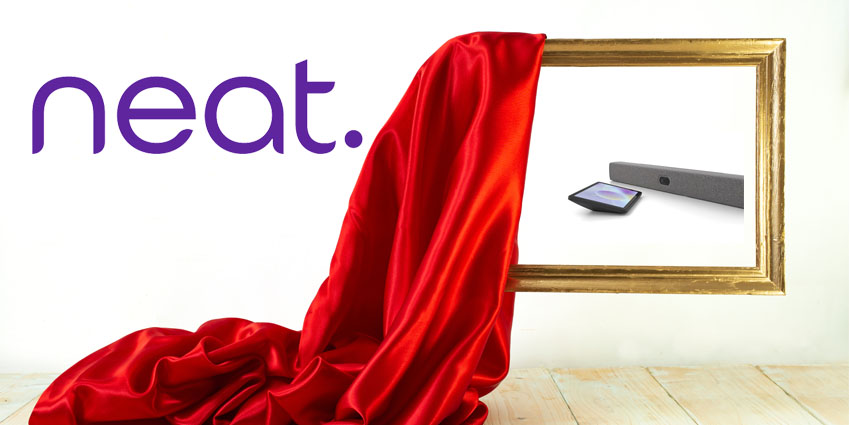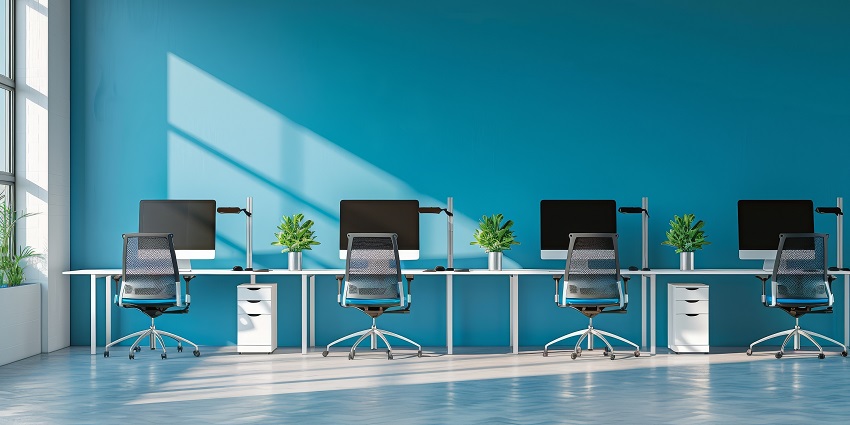1. What are the biggest challenges faced by businesses when choosing the right endpoints for hybrid work?
Jeff May, UK Sales Director at Konftel: “Choosing the right video and audio endpoints for room coverage, ease of use, and high performance are all critical factors. Equally, remote workers should have an equal voice and video participation as those in the office.
“Installation of equipment can be overlooked in favour of product specification and operation, but ensuring equipment can be located where it is needed and how is also critical.
“There are also two distinct choices when investing in meeting room conference technology – a Bring Your Own Meeting concept where people use their own laptop via a meeting app of their choice, or they turn up to a dedicated in-room PC-based system where all the hardware is already in place, including one specific meeting service.
“Both options offer great quality meeting experiences, but it’s essential that the differences in operation and any restrictions of each are fully explained and understood before investments are made.”
Ahmed Sousa, Systems Engineering Director – EMEA at Poly: “Hybrid work is here to stay, and because of this, businesses have the challenge of choosing endpoints that fit with the changing habits and preferences of their workforce. If businesses invest in the same technologies for all, they may have challenges around performance and engagement.
“As workers divide their time between office and home, business leaders must recognise the different types of personas. For example, those on calls or virtual meetings may choose lightweight devices or headsets that prioritise their comfort over portability. But those that work from home might prioritise noise cancellation headsets.
“If businesses can recognise those differences, then they can solve any challenges they may face when it comes to employees being equipped with the right tools to perform their best, no matter where they are located.”
Nigel Dunn, Managing Director for EMEA North at Jabra: “With the rise of hybrid working, the term “meeting equity” has entered the discussion and how businesses can create equitable virtual environments. This means giving every meeting participant a place at the table and an equal opportunity to contribute. Hybrid meetings consist of both physical and virtual meeting participants, so true meeting equity becomes harder to achieve.
“Businesses face the challenge of choosing solutions that provide better meeting inclusivity and equity, such as video conferencing cameras that include everyone in the picture, so all participants can be seen and nobody misses out.
“While remote working has numerous benefits, companies are more vulnerable to cyber-attacks as employees can unknowingly create entry points and compromise data by connecting to unsecured home and public networks or by using personal devices for work.
“Businesses now need to have security top of mind and to invest in solutions that deliver high-quality, secure collaboration from anywhere.”
2. What forms of devices are most in-demand? How has the emergence of hybrid work changed demand?
Jeff May, UK Sales Director at Konftel: “Hybrid work is here to stay for the foreseeable future at the very least.
“At the start of the pandemic, there was a huge demand for plug-and-play USB devices, and this forward momentum is continuing, with scalable options to kit out different room sizes.
“Remote meetings are now part of everyday working life, whether people are back in the office or at home.
“Video cameras and audio devices are at the heart of today’s collaboration trends. Powerful, beamforming audio technology ensures the very best microphone pick-up, even in acoustically challenging rooms.
“Wireless connection is a hot topic for some as they want the freedom to locate wherever they wish and avoid trailing wires. This can come with some reliability compromises, so wired wall or ceiling-mounted devices are really popular as they bring flexibility, no trailing wires and guaranteed performance.
Ahmed Sousa, Systems Engineering Director – EMEA at Poly: “We’re seeing intelligent control and high-quality audio, video, and collaboration devices most in demand. This is because they’re essential to levelling the playing field between those in the office and those working from elsewhere.
“Many businesses looking to implement long-term hybrid working strategies are planning to redesign office spaces, including collaboration spaces, open plan areas, and meeting rooms.
“Adopting technologies will also be a priority to ensure employees can work from any location. Our research shows that organisations are investing or planning on investing in technologies to improve employee experience, including collaboration software (92%), headsets (89%), and cameras (86%).
“By equipping employees with the right technology, workers can work from anywhere effectively.
“Once organisations acknowledge that endpoints need to be matched to spaces, participants, and the meeting flow to deliver that “in-the-room” feel to remote workers, they can boost productivity and maintain a positive, people-first company culture.”
Nigel Dunn, Managing Director for EMEA North at Jabra: “Jabra’s research found that users of professional audio devices reported feeling more included in virtual meetings than those using either consumer audio devices or the microphones and speakers built into their laptops.
“We’re seeing demand for professional headsets that make flexible working simpler and more productive with superior call quality and noise-cancelling technology.
“Hybrid working is driving demand for flexible, plug-and-play solutions that are simple to set up without the need for IT support. Users want reliability and ease of use from collaboration solutions that work seamlessly with Microsoft Teams, Zoom and UC platforms.
“Video plays an integral role in creating a successful hybrid working environment that bridges the gap between employees working across distributed teams.
“Compact, portable, personal video conferencing cameras, such as PanaCast 20, with AI-driven features such as Intelligent Zoom and Lighting Optimisation make meetings feel more natural and lifelike as if you’re in the same room.”
3. How much of an impact is the components shortage?
Jeff May, UK Sales Director at Konftel: “At the start of the pandemic, there was a huge shortage of equipment across many different industries and sectors.
“Some are managing better than others, whilst some, such as the automotive sector, continue to experience delays. It is a challenge for our industry too, but for our company, we have very healthy stock levels as our product portfolio continues to evolve.
“Most analysts expect disruption to continue for another 12 months or more, with unstable pricing and supply shortages likely.
“We made a pledge to our industry that we would not increase our prices during the pandemic as our services were critical to many to continue in business, and we have maintained that to this day, one of the few companies to do so.”
Ahmed Sousa, Systems Engineering Director – EMEA at Poly: “The supply chain will continue to be a challenge for the foreseeable future for all companies.
“Our approach is to continue working with our partners to communicate the best we can on delivery dates and communicate effectively when we have enough products to meet the demand.
“We’re continuing to work with our suppliers and partners globally to ensure that this is a smooth process for everyone.”
Nigel Dunn, Managing Director for EMEA North at Jabra: “The overall supply situation has been gradually improving, and the component situation is expected to further ease in the coming quarters.
“We continue to experience solid underlying demand. While certain components remain in global shortage, impacting many different industries, to mitigate this, we have several initiatives in place, including re-engineering of certain high-volume products to ensure more flexibility on available components.”







